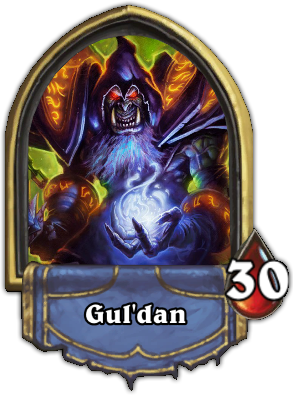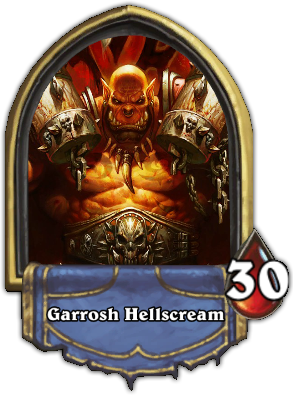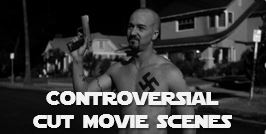Also See: Our Complete Beginners Guide to HearthStone
If you’re one of the lucky ones that managed to get your hands on a BETA key for Blizzards HeartStone then you’ve probably been playing non-stop trying to get the hang of things. We are addicted. After playing a few games you will notice that it does get pretty intense, and as simple as it is to play (and fun) there’s a plethora of things you should know and learn in order to become really good at it.
In our first guide we went through the initial options of the game and our first impression.
Today we’ll be going through some tips on how to start playing. How to choose a Hero, what Deck types there are, and some strategic tips on actual in-game skills. We will be posting more of these tutorials as we increase our level of competency and as we advance in the game. Here’s our second HearthStone Guide – How to Choose a Hero and Deck Type:
1. The more you play the better you get
This is probably the most important truth when it comes to HearthStone. Unlike other games where you can spend hours reading, discussing and strategising before you play. With HearthStone you have to simply jump in there and compete against other player. The number one way to become better is to play a lot. In doing this you will:
- Learn how your Deck works for you
- Learn which card combinations work and which doesn’t
- Learn how the other Heroes work, what their strengths and weaknesses are.
2. Which Hero must I choose?
It is purely up to you to choose the Hero you like, but there’s a few things to consider when choosing a hero. Each one has a different style of play. But first, lets introduce them, they are:
Each Hero represents a different class, and depending on the class you choose, will determine your style of play. We” briefly go through each class here:
Malfurion Stormrage (druid)
The druid class offers an immensely versatile style of play. Malfurion embodies flexibility, shifting between forms to bring the pain to his enemies. Their starting deck is pretty bad, but as you level up and start customising your own deck the druid can be lethal.
Rexxar (hunter)
Rexxar demonstrates a natural affinity for beasts, with many of his cards focusing their effects on beast minions.
Hero Power. Also specializes in ranged attack, but can be extremely powerful when buffs are applied correctly to powerful beasts.
Jaina Proudmoore (mage)
Jaina possesses powerful magical abilities, that allow her to dish out damage in a myriad of ways, while holding the enemy at bay. The mage is the most popular class to begin with. Her hero power is the worst though, but more on hero powers later.
Uther Lightbringer (paladin)
Uther calls upon the power of the Light to empower his allies and subdue his enemies. The paladin is a popular class, and also n nice one to choose as a beginner. The paladin is a well-rounded class which focuses on strong minions and limiting your opponent’s ability to use their own.
Anduin Wrynn (priest)
Anduin may excel at healing and empowering his allies through the Light, but don’t underestimate his ability to extinguish his enemies with shadow magic. We’ve found Anduin one of the most frustrating Heroes to play against as he keeps healing himself every turn.
Valeera Sanguinar (rogue)
Valeera relies on trickery, deceit, and precision strikes to bring down her enemies. Her Hero Power allows you to destroy 2 health minions without a weapon card. Skill is required to excel with her.
Thrall (shaman)
Thrall calls upon the elements to strengthen his allies and subdue his foes. His Hero power is another frustrating power to deal with when you play against Thrall. He summons totems every turn onto the battlefield with various buffs and abilities.
Gul’dan (warlock)
Gul’dan stops at nothing to defeat his enemies, even trading his own soul in exchange for command over powerful demonic minions and magic. The Warlock is great at sniping enemy minions, and increasing his own minions’ strength at the cost of his own health.
Garrosh Hellscream (warrior)
Garrosh fears nothing as he leads his minions on the battlefield, relying on strength of arms to defeat his foes. Garrosh is also a versatile hero, you can use his hero power offensively or defensively. He is one of the strongest Heroes to begin with.
3. The Deck Types
The various types of Decks keep changing and it is of course up to you to build your own deck. There are however 4 types of Decks that have become very popular:
Aggro Decks
The Aggro deck or “Aggressive Deck” is primarily concerned with dealing as much damage to an opponent as possible, in as short a time as possible. In the Aggro Deck, the goal is to focus on short term, high paced and high damage strategy. The core philosophy of the Aggro Deck is to convert all cards to damage. This deck type can have very successful results towards opponents that are not ready. Basically, if you find yourself losing a match in just a few turns, then you were most likely victim of a well built and executed Aggro deck. We may see a lot of aggro decks from various classes. There appears to be some huge aggro potential from the Hunter Class with a strong set of beasts, as well as the Druid class with it’s versatility. You can read more about the Druid Aggro Deck.
Burn Decks
This deck is actually a subtype of the Aggro deck. The Aggro-Burn deck, as it is often called, focuses more on direct spell damage. We may see some interesting burn deck potential from the Shaman class, as seen in the Hunter vs Shaman Fireside Duel, with the spell damage avoiding the Hunter’s Snake Trap
Control Decks
Control Decks take a less aggressive approach. The focus of a Control Deck is much more defensive, while whittling away your opponent’s health over a longer period of time. This kind of deck is much more complex than the Aggro or Aggro-Burn decks, because it requires constant care and strategy that has a more long term vision. A control deck will usually be building up a strong offense, while prolonging the game as much as possible. When executed well, a Control Deck leaves your opponent powerless. It is very likely that we will see the Mage class have a huge following with this deck type. Cards like Blizzard, Frost Nova and Polymorph are really at the essence of what a Control Deck is. Aside from that, the Control deck will be the type of deck best apt to make use of very expensive, high mana cost, endgame, “finishers”.
Combo Decks
Finally, the Combo Deck. This is a very fun deck type, but can be very dependent on luck of the draw. The Combo Deck is focused on very specific strategic combinations, that when played give you the upper hand to win the match. With this deck type the strategy is usually very clear, it’s just a matter of drawing the appropriate cards and playing them in sequence, before you opponent defeats you. The victory will usually be in the form of a quick death, once the combo is played. This deck type will be huge among the Rogue class, since Rogue actually has acombo mechanic to exploit. It will be exciting to see which Rogue Combo Decks people will develop in Hearthstone.
We hope you have a better understanding on what the available heroes are, the type of Decks most commonly used, and what type of strategy you want to use. We’ll be posting our next tutorial shortly, but for now… see you in-game!
If you’ve been following us here at GeekShizzle then you would know that we are completely addicted to HearthStone. We’ve been playing non-stop and have even started putting together some handy tutorials. Have a look and learn:
- In our first guide we went through the initial options of the game and our first impression.
- In our second guide we briefly looked at the Heroes and how to choose one, what Deck types there are, and some strategic tips on actual in-game skills.
- In our third guide we looked at how important Taunt cards are and how to use them, as well as the best possible times to use direct spells.
[Source]















Trackbacks/Pingbacks